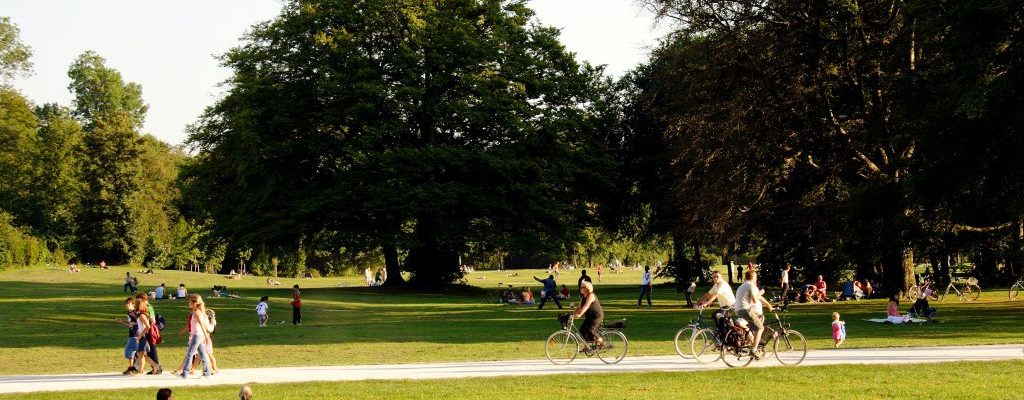Protecting ourselves and each other as we move out of lockdown

On 22 February 2021, the Government published its ‘Roadmap out of Lockdown’ which set out how national coronavirus restrictions would be eased in stages, with reviews taking place on set dates.
We passed the first milestone and changes to restrictions came on the 8th March, with the re-opening of schools and allowing people to meet one on one outdoors. It is possible that most restrictions on social contact could be lifted by 21 June, however this is the earliest possible date and is subject to the step by step review process.
The current situation
We have now passed the second review stage, and another change to the restrictions on social contact has now been introduced. Six people, or a larger group if just two households are present, can meet outside including in private gardens. This change in the restrictions will allow people to reconnect with their loved ones and safely begin to have more of the social contact we have been missing.
As the rules around social contacts change, it is important to consider why they are changing in this way. Evidence shows that meeting outdoors is safer than meeting indoors, as you are much less likely to pass on or catch coronavirus in the open air, particularly if you are also adhering to social distancing, and limiting the number of people you meet in line with the guidance.
It is also important to remember that while the requirement to stay at home has also been lifted, the advice is to minimise travel but if you do need to travel, to plan your trip carefully, wash your hands often, social distance and wear a mask in all applicable settings. Overnight stays outside of your own home are still not permitted including over Easter weekend, when we know people will be making plans to meet up outdoors. We are continuing to closely monitor and learn about coronavirus variants and trips abroad are still not allowed unless for certain exempted reasons.
These steps will help stop the transmission of coronavirus from different areas of the country, and from household to household. See the for more information on how to stop the spread of coronavirus, and importantly why we recommend each of these actions.
Whilst the number of people with coronavirus is reducing, and the number of people who have received their vaccination is increasing every day, it is still vitally important that we take these protective actions as we see restrictions slowly lifting.
Keeping infection rates low
Spring is here and with an Easter break from school, lots of people will likely be enjoying a break from work too. We know how much people want to be reunited with their loved ones and while the restrictions protecting us won’t last forever, they remain very important right now.
Whilst we are making great progress with the vaccination programme and coronavirus infection rates continue to fall, we are still in an important moment where infections could start rising again if we do not continue to act to keep ourselves and others safe.
Receiving a COVID-19 vaccine will offer people personal protection and everyone should have confidence in the effectiveness of their jab, but being vaccinated doesn’t mean the restrictions no longer apply as you may still be able to pass on the virus even once you have had the vaccine. It will continue to keep us all safe if we stick to the rules following vaccination and as we continue learning about how the virus is transmitted by people who are vaccinated.
Whilst we have been successful in reducing infections during this national lockdown, case numbers are still relatively high in certain parts of the country, and it is important to remember that around one in three people do not get symptoms and can pass on COVID-19 unknowingly.
This is why, as we begin to mix more outdoors, staying two metres apart, washing our hands regularly and wearing a face covering in all settings where it is required will keep making a vital contribution to keeping infection rates low. If we mingle at close quarters, or relax our vigilance about these steps and the restrictions in place, even after we have had the vaccine, we could undo what we have all made huge sacrifices to achieve.
While many vulnerable people have now received a vaccine, and people in their 50s are now eligible, not everyone at risk of serious illness is protected. Those who are not yet vaccinated remain at the same risk of catching the virus if they come into contact with it and of becoming very unwell as a consequence.
If we follow the guidance by keeping our plans local, coupled with protective actions such as remaining in small groups and only meeting outdoors, we can save lives. Doing this will also keep us on track towards society opening up fully, and regaining the rewards and joys we remember from before the pandemic.
Looking ahead
The next stage in the Roadmap for easing restrictions will come no earlier than 12 April, where we will hopefully see non-essential retail open, hair salons and beauty treatment resume and gyms and pools re-open. Hospitality such as pubs and restaurants will also open with outdoor service only.
People are rightfully feeling optimistic about the coming months and we have much to look forward to. We all want to get there and together we can, if we keep our focus on following the guidance and protecting ourselves and others throughout the different stages of the roadmap.
Subscribe to our blog to keep up to date on new posts.
Image: Ignacio Brosa
View original article
Contributor: Yvonne Doyle

